Send copies of Donald Scarinci’s book, “David Brearley and the making of the United States Constitution” to your Alma Mater’s History Department, your favorite constitutional lawyer or scholar, your high school or your Lodge.
Place an order and put yourself on the donor list supporting a great conciliator protecting the founders’ fighting spirit and faith in the future of democracy.
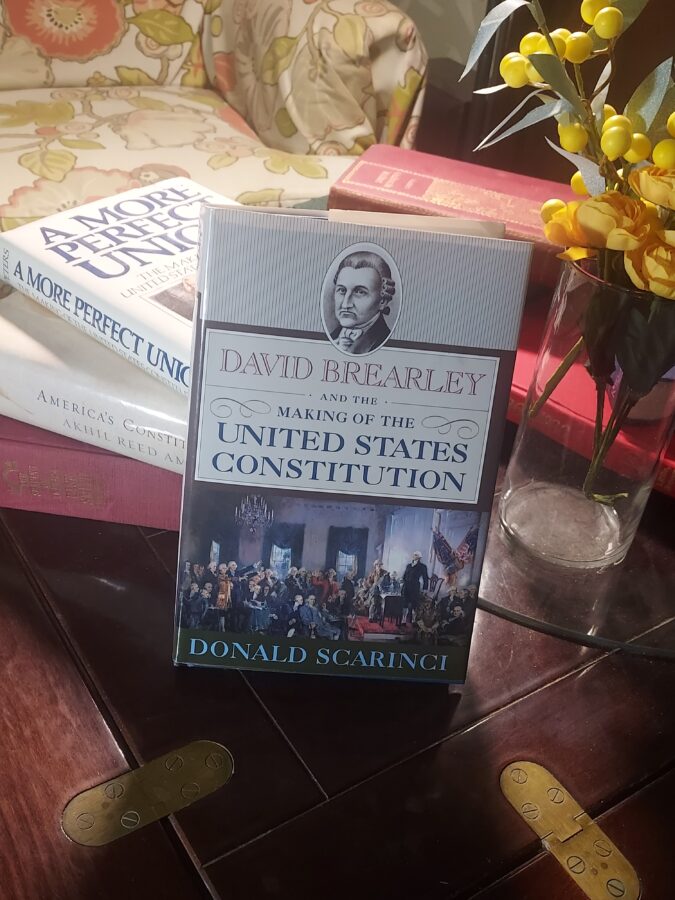
Creating a David Brearley Constitution Center
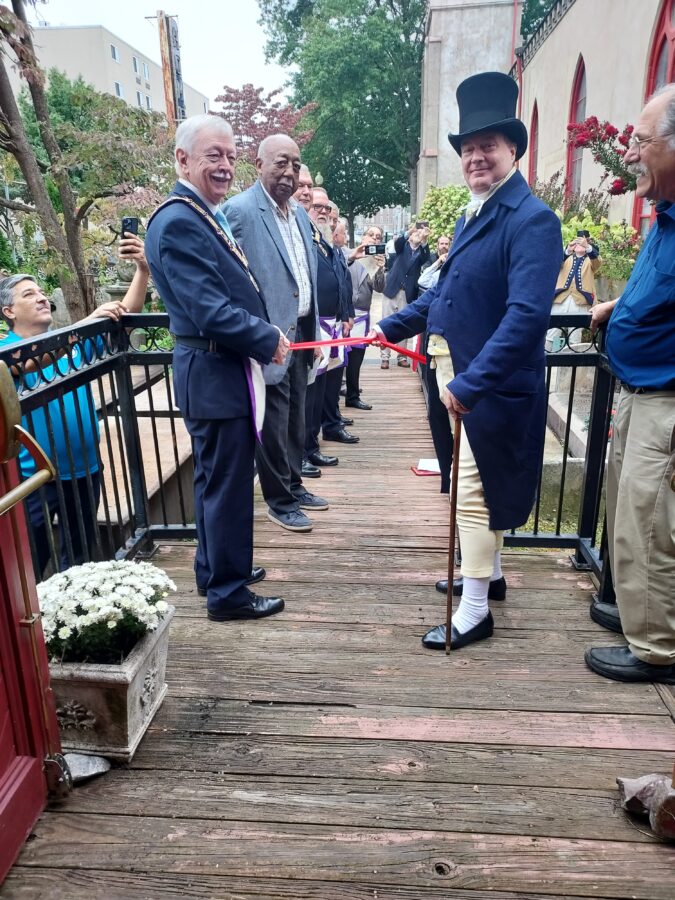
Marquis de Lafayette re-enactor on his 200th anniversary tour of America cuts the ribbon for the Brearley Legacy Center in September 2024. (click the picture to read the story). The Legacy Center, telling the Brearley story and sitting above Brearley’s grave in the Parish House entranceway is the first symbolic step in the process of helping to narrate the engaging story of the Constitutional Convention in 1787.
Leaning on the David Brearley Legacy
In the telling of the Constitution’s story, St. Michael’s David Brearley has been passed over for 250 years. He is therefore a “new” and sympathetic figure. Two important details of the Constitutional Congress of 1787, The New Jersey Plan and The Committee of Postponed Parts provide a unique starting point around which to explain the convention to a newcomer, and Brearley both introduced The New Jersey Plan to the floor and chaired the Committee of Postponed Parts, which closed up the missing features and finalized the Constitution in its current form.
That one can create a narrative from the standpoint of New Jersey only highlights a more important point: that every state that participated in the Constitutional Convention (including Rhode Island, which did not) has a unique narrative regarding the debates and long harangues that took place in shaping our national government.
Nearly every delegate’s importance to this document can be weighed-in on, whether they were outspoken or not, ….and we should hope that each member’s home town could justifiably house the same interactive “Constitution Center,” educating the surrounding community and visitors about the founding document, and the story leading to the current structure of the United States government.
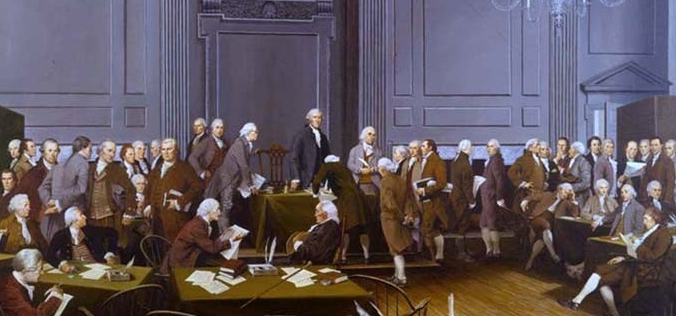
That one can create a narrative from the standpoint of New Jersey only highlights a more important point: that every state that participated in the Constitutional Convention (including Rhode Island, which did not) has a unique narrative regarding the debates and long harangues that took place in shaping our national government.
Nearly every delegate’s importance to this document can be weighed-in on, whether they were outspoken or not, ….and we should hope that each member’s home town could justifiably house the same interactive “Constitution Center,” educating the surrounding community and visitors about the founding document, and the story leading to the current structure of the United States government.
When the Convention ended in September of 1787, almost no one liked the new Constitution.
It was a mass of compromises. It was full of flaws which many delegates continued to point out. Nearly everyone had reservations about it— believing the future government must indeed break up and fail. Indeed, not long into the proceedings it had become obvious to everyone that the nation they sought to unite might break apart over slavery and the production of wealth…. as, of course, it was to do a generation later.
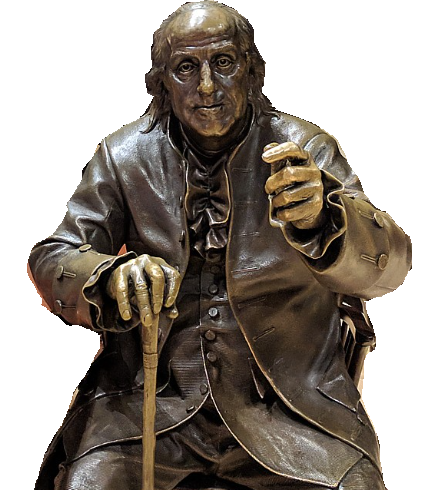
Benjamin Franklin summed the four-month process in a resounding speech in which he admitted he, too, hated the results. But from long experience he had learned to doubt his own ‘wisdom.’ He made a joke of that wisdom in fact, by comparing it to a woman who candidly admitted to her sister that only SHE could ever be correct about anything. And so he told himself and his fellow delegates to accept this cobbled-together effort as perhaps the best that the greatest and ablest minds of a continent could produce. He said he would sign the document with faith that it would work, and he encouraged everyone who hated the present constitution to do the same for the sake of the people and the present health of the new nation. Then he wrote a short codicil under which each man could sign, absolving himself and his signature from representing total agreement with the document, but faith in it as representing the best that all could accomplish together. Seven did not sign, while acknowledging the truth to Franklin’s logic.
Specifications for Developing a Constitutional Congress Game.: “Would YOU sign THIS?”
The Brearley Constitution Center hopes to become a prototype for a wider introduction of SEDS at St. Michaels. SEDS provide the potential for a new way to attract the everyday citizen to broaden their horizons with lifelong learning– a new kind of person-to-person ‘general store’ of learning outside of the most potent and dangerous precision-cast (social) media of today.
The Small Educational Delivery System (SEDS)
Small educational delivery systems (SEDS) are the fruit of technology. We live in a new world where everyone can ask a question of their smart-phones – each of us carries an Encyclopedia Britannica in our pockets. Indeed, any child can have access to a wealth of knowledge beyond that of the New York Public Library if they are only shown how to go about it. Assuming they care to learn, and if they have anything to look for.
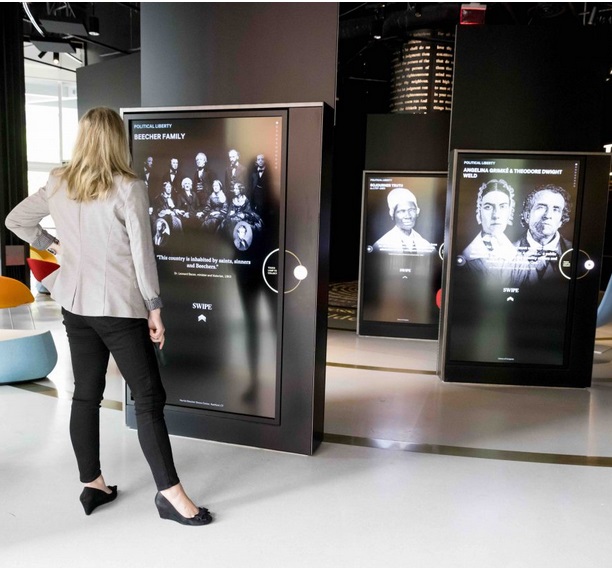
The Small Educational Delivery System is designed as a game, to peak curiosity and appetite. It is played on an interactive ‘educational field’ which encourages group participation through the visitors’ smartphones. Once created, can be installed anywhere. The illustration shows the type of space it would fit in. (see Acad.edu article on High Level SEDS specification).
Clearly the design of a “game” to make someone want to learn about the story of the Constitution poses a very great challenge. It shall require our best creative entertainment and academic talents (see “Would You Sign This?, below). The photo at left shows what an SEDS installation might be like. This one was at the Faith and Liberty Discovery Center in Philadelphia (closed since 3/24)
The best way to understand what Franklin meant, and what is in fact historic about the U.S. constitution — the men and the process that created it– is to help someone put themselves in the place of each state, and discover why as a voter charged with ratifying the document and joining the union, they might not otherwise have signed. WHAT IS IT THAT CONSTITUTES A CONSENSUS? The situation then was quite like our situation today. Whatever we have, and whoever is at the helm of it, the importance of tolerance and gratefulness for the structures that shall move the nation forward should make more of a citizen out of everyone.
The Brearley story allows for a very quick introduction to just one state’s unique situation, and the role its delegates played in the Convention. What most of us fail to grasp is that large territories such as Italy and Germany existed as a confederation of principalities (whether republics or hereditary kingdoms), which were united only by a common language — the large nation-state other than a kingdom or an empire held together with arms — was a novelty. And yet it is hard to appreciate that the wide range of freedoms (sometimes bordering on ‘cultural anarchy’) existing across this country still rank as perhaps the greatest freedoms in the world.
The goal, of course, is to present the visitor with as many reasons to oppose the constitution as to support it, and then prompt them with ways to “rectify” the document as the delegate of a state in 1787. As with most game designs, one moves through nested ‘realms’ into different worlds of choice; and at various depths of involvement in ‘play’ the design should lead the visitor to distinguish between the constitution and the Bill of Rights, the notion of states as economic and cultural entities, the nature of Rhetoric (which is to say, the combination of arguments that move people to agree and act); the notion of legal precedents and the artifactual nature of the law vs. the ideals of law.
With the capacities of Artificial Intelligence, which were developed to support economic and military game scenarios, it is now possible to allow visitors to place themselves on the floor and see the impacts of various votes, as well as the inter-state scenarios that should have arisen with this or that provision in place or absent. The high complexity of the SEDS tool, however, comes from the fact that multiple visitors will be encouraged to participate at once, as in high-investment online games, communicating through WIFI to their own phones.
SEDS make way for new investments in the Decentralized Community Museum
What is now possible with VR and AI (as well as crude holography) at a consumer level means that educators no longer need a central museum or TEA (Themed Entertainment Attraction) like Epcot. We are now free to rethink idea of the museum itself as well the broader context of recreational education. With decentralized SEDS addressing a wide variety of themes such as the half-dozen proposed for different locations around the St. Michael’s church, and cropping up (rather like high-tech educational pinball machines) in locations around a town, building on the experience of an educational activities hub, a whole neighborhood can slowly become an extension of that hub. The goal? To turn any town into an ongoing exploratory learning experience similar to a Williamsburg or a Renaissance Fair. !!
While the educational experience design and software represent high cost investments (see High Level SEDS specification), they can be quickly shared through distributed investments across society. High quality academic oversight and artistic quality costs means that we can steer clear of shoddy online game developers and their tawdry worn-out Hollywood themes while we introduce a new era of privately-funded educational media–and the role and philosophy of education is understood (with Dewey) as a means of socialization and creation of a healthy citizenry .1
- Too infrequently do we note that the philosophy of education quite distinct from a technique of imparting knowledge. The ends and purposes of learning have generally been about the transmission of ethics –the means to create good citizens and a healthy (economically sustainable) society. This traces back to arguments of Isocrates and Quintillian, and can be followed through the European narrative into the Middle Ages to such luminaries as Pestalozzi, Tolstoy, Dewey and Bruner. A similar debate can be found in the literatures of China and South Asia, and over the ends of scholarship in highly literate cultures such as the Hebraic. The same theme is found throughout the folk literature of Africa and numerous unlettered peoples. In this sense, even training is to impart skills to protect and support the social economy…whether these skills be hunting or law. ↩︎
10263 Pageviews
